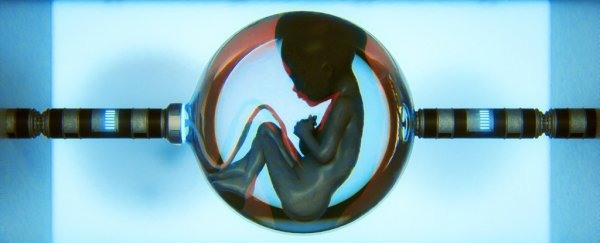The lines are blurring, any which way you look. Thanks to the incredible pace of scientific progress, the very definition of what it means to be 'human' is becoming an increasingly open question.
In a world where living beings like genetically edited babies and human-animal hybrids are made to exist, the questions aren't only ethical, two biomedical experts argue in a new paper - they're legal, too.
The legal definition of what a 'human' being is has to adapt or expand somehow, they say, to recognise and protect whatever level of humanity, altered or otherwise, these lab-made life-forms actually possess.
"Bioscientific advances are nibbling away at classical legal boundaries that form the bedrock of the normative structures on which societies are based," authors Bartha Maria Knoppers and Henry Greely write in their new policy forum paper.
"Determining whether some 'thing' is now some 'one' carries with it profound implications for the rights and obligations the law recognises for 'humans'."
Knoppers and Greely – two legal researchers who specialise in issues surrounding bioscience technologies – say biotechnology advancements like revived brains being brought back to life from the dead, along with synthetic humans, chimeras, and the seemingly endless possibilities of CRISPR, all challenge existing legal definitions of 'human'.
The pair, who are respectively affiliated with McGill and Stanmore universities, say it's actually pretty hard to legally pin down what a human is, arguing that neither our genetic identity, species identity, nor 'neuro' identity (based on our brain and consciousness) can easily define us in ways that cannot be challenged, especially by new biotechnologies, which increasingly blur the lines even more.
But the solution, they write, it not to go back and seek to legally redefine what it means to be human, as such a course of action could potentially undermine the theoretical foundation of all human rights.
Rather, they suggest, we need to look at the level of substantiality in a being's right to be considered human – analogous to the kinds of determinations we make when we recognise humanity in people every day, in more simpler circumstances.
"We care about living organisms that are human in their characteristics, but they do not always need to have exactly human characteristics," the pair writes.
"'Human beings' typically have two arms and two legs, but we recognise as human those without all those limbs, through amputation or congenital condition, as well as people with artificial limbs."
By an extension of that 'substantiality' metaphor, the researchers say we can identify humanity in tissue, where other forms of non-human tissue may be present, and in all other kinds of novel cases.
For that reason, if we retain our old understanding of what it means to be human but marry it to a legal concept of substantiality, we may be able to find a way of recognising humanity, to various levels, on a case by case basis.
It may not be a brilliant solution, the researchers acknowledge – but it could give recognition and protection to life-forms in situations where, under traditional law, beings that are in fact 'substantially human' did not previously have any.
"Rules that include the word 'substantially' are never fully satisfying," Knoppers and Greely write.
"Nevertheless, in a Universe where things blend into each other and living organisms are not cleanly divided into Platonic natural kinds, they may be the best filter we can apply: a malleable term for contextual and proportionate evaluation."
The findings are reported in Science.
